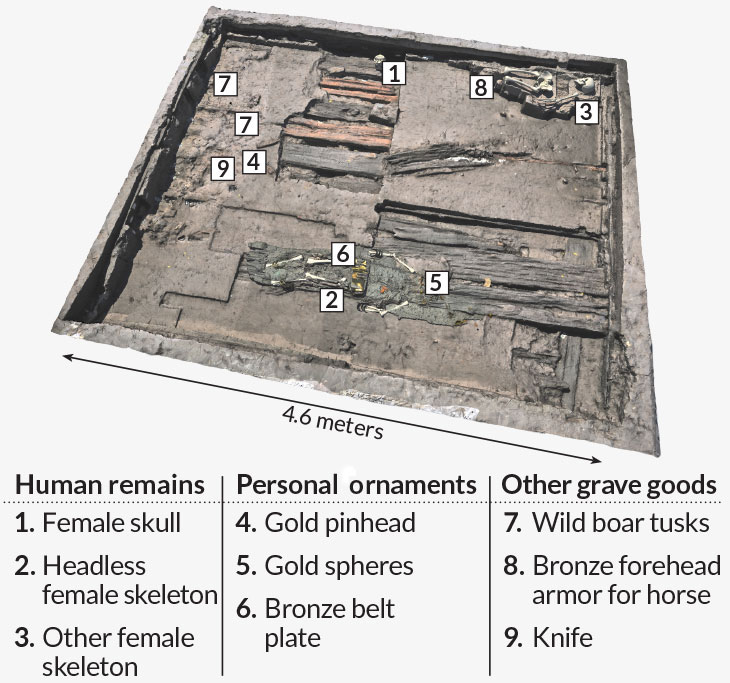Iron Age secrets exhumed from riches-filled crypt
Treasures point to trade links between Central Europe, Mediterranean cultures
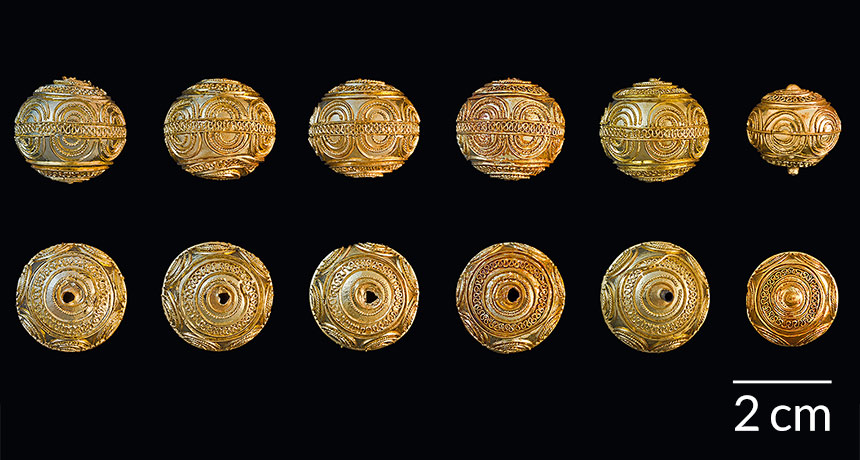
GOLDEN FINDS Five gold spheres and a gold pinhead (far right), each shown from two angles, were found on the skeleton of a woman buried near an early Iron Age hill fort in Germany. These and other items in the grave show connections to Mediterranean societies, probably via trade.
© Archaeological State Office of Baden-Württemberg, Antiquity Publications Ltd.
Discoveries in a richly appointed 2,600-year-old burial chamber point to surprisingly close ties between Central Europe’s earliest cities and Mediterranean societies. Dated to 583 B.C., this grave also helps pin down when people inhabited what may have been the first city north of the Alps.
An array of fine jewelry, luxury goods and even a rare piece of horse armor found in the grave indicates that “there were craftsmen working in the early Celtic centers north of the Alps who learned their crafts south of the Alps,” says archaeologist Dirk Krausse of the Archaeological State Office of Baden-Württemberg, Germany.
Previous research has established that speakers of Celtic languages inhabited parts of Europe as early as 3,300 years ago. Celtic iron makers appeared in Central Europe by around 2,700 years ago — marking the beginning of that region’s Iron Age — and founded what’s now called the Hallstatt culture.
The grave and a smaller adjoining burial lie in a German cemetery situated across the Danube River from an early Iron Age hill fort called the Heuneburg. Along with yielding insights into long-distance trade and the timing of Europe’s first Iron Age cities, these graves provide the earliest evidence of Hallstatt people elaborately interring women and even children, Krausse and colleagues report in the February Antiquity.
“The main burial represents one of the oldest examples of an exceptionally rich female grave and serves as further testimony of the important social role of certain women in Hallstatt communities,” says archaeologist Manuel Fernández-Götz of the University of Edinburgh, who did not participate in the new study.
Story continues after slideshow
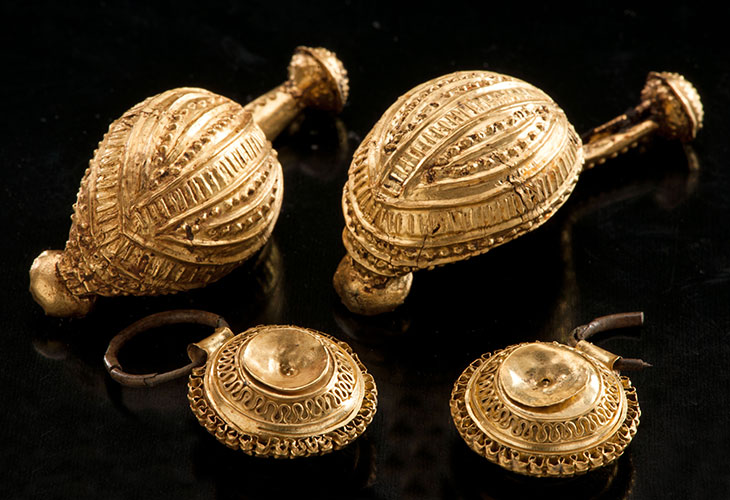
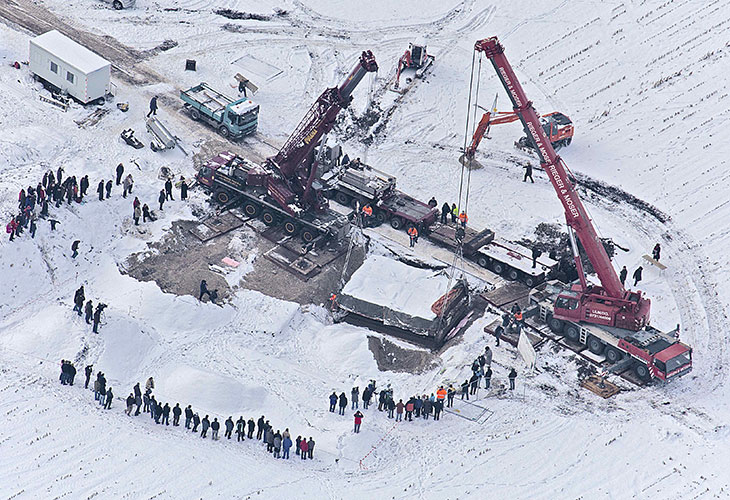
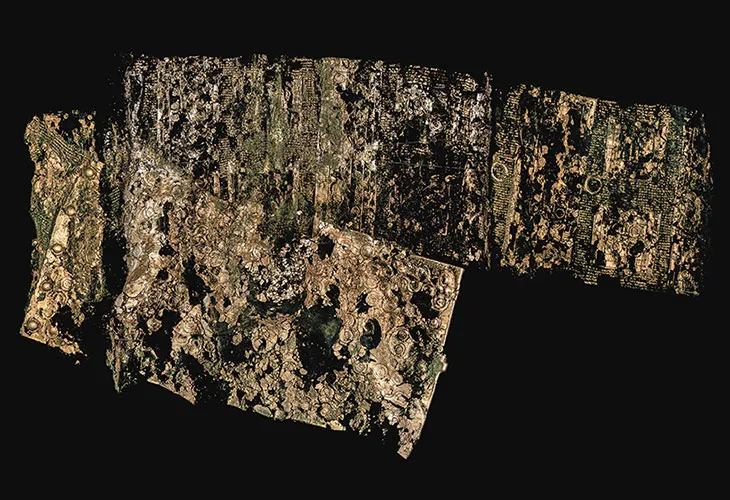
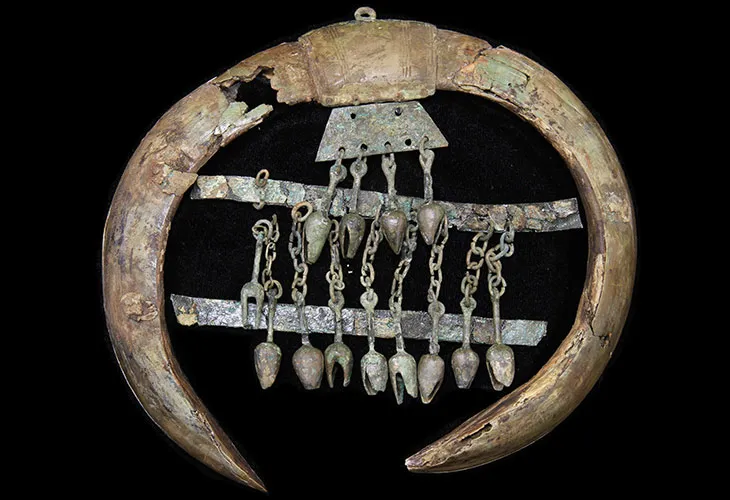
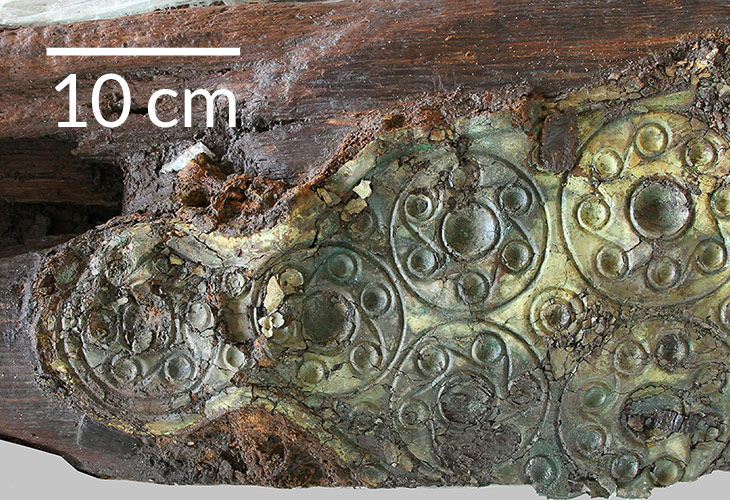
While surveying earthen mounds covering graves at the German site in 2005, Krausse’s team noticed a gold-plated bronze brooch fragment lying on the ground. An excavation revealed that the brooch came from the grave of a 2- to 4-year-old child whose skeleton was surrounded by gold and gold-plated jewelry.
It turned out that the child’s grave was an addition to a larger burial chamber. Because farming activity threatened the site, cranes were used in 2010 to hoist out the chamber and surrounding soil in a block weighing 80 metric tons. Researchers excavated the tomb at Krausse’s facility.
Planks of oak and silver fir formed the chamber. Comparisons of growth rings in the planks with previously dated tree rings in the region indicate that the tomb was built in 583 B.C. Previous excavations over the past decade had suggested that the Heuneburg and several other early Iron Age settlements in Germany and France were the first cities north of the Alps, but the grave provides the most precise date yet. Prior to this find, settlements dating to between 2,200 and 2,000 years ago have traditionally been considered the first Central European cities.
Inside the chamber, the team discovered a 30- to 40-year-old woman’s headless skeleton. Her lower jaw and skull were found at two other spots in the grave. Objects placed on and around the skeleton included gold, bronze, amber and jet jewelry and brooches. Decorative styles of some items showed Mediterranean influences. Researchers also found two pairs of boar tusks mounted on large pendants. Each pair of tusks curves around two bronze strips and bronze bells hanging from a smaller pendant.
Another woman’s skeleton and pieces of bronze jewelry rested in a corner of the chamber. It’s unclear whether both bodies were buried at the same time.
A decorated bronze sheet found near the second skeleton’s feet was a piece of armor, called a chamfron, that covered a horse’s forehead, the researchers say. Traces of plant netting and fur preserved on the inside surface of the sheet come from padding, they suspect. CT scans revealed remains of an iron horse bit at one end of the sheet, where it fit in the mouth.
This is the first chamfron found at a Hallstatt site. It resembles horse armor from around the same time found in several Mediterranean cultures, Krausse says.
“The tide is finally shifting” toward accepting links between early European Iron Age cities and societies south of the Alps, says anthropologist Bettina Arnold of the University of Wisconsin–Milwaukee. She suspects that, as at some other Iron Age graves, the elite woman’s burial chamber was looted or material was removed for ritual reasons shortly after interment. Such burials typically included a wagon and metal vessels, but these are missing in the woman’s spacious grave. “This grave is a puzzle, and Hallstatt culture is still enigmatic,” Arnold says.
Burial digs
A laser scanner produced this 3-D view of a 2,600-year-old burial chamber from Central Europe. It includes a headless female skeleton surrounded by jewelry (near center), the female’s skull (upper center), another woman (upper right), mounted boar tusks and bronze forehead armor for a horse among other items.
